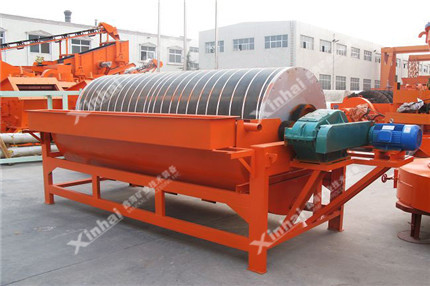The ore particles enter the feeding area of the tank in a loose state. Under the action of the magnetic field, the magnetic mineral particles are magnetically aggregated to form "magnet clusters" or "magnet chains". The "magnet clusters" or "magnet chains" move toward the magnetic poles in the pulp under the action of magnetic force and are adsorbed on the cylinder. . Since the polarities of the magnetic poles are alternately arranged along the rotation direction of the cylinder, and are fixed during operation, the "magnet cluster" or "magnetic chain" will generate magnetic stirring phenomenon due to the alternation of the magnetic poles when the cylinder rotates and become mixed. The gangue and other non-magnetic minerals in the “magnet cluster” or “magnet chain” fall off during turning, and the “magnet cluster” or “magnetic lotus” that is finally attracted to the surface of the cylinder is the concentrate. The concentrate will follow the cylinder to the weakest part of the edge of the magnetic system, and will be discharged into the concentrate tank under the action of the flushing water jet from the unloading water pipe. Non-magnetic or weakly magnetic minerals are left in the slurry and discharged out of the tank with the slurry, which is the tailings.

Magnetic drum is a dry magnetic separation equipment used for pre-selection of coarse-grained strong magnetic minerals.

A wet permanent magnetic separator for separating strong magnetic minerals

A Xinhai self-developed patent product - Dry Magnetic Separator.